in search of COTTON EYE(D) JOE
in search of COTTON EYE(D) JOE
with Norman Warwick
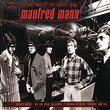
photo 1 my I have put my name under the heading, but the truth is that, really, my name is Jack and I live at the back. Its all very confusing but that song, My Name Is Jack, was written by American record producer John Simon and released as a single by British group Manfred Mann (left) in 1968. Their version reached number 8 on UK record charts. It became an international Top 10 hit, but only reached number 104 in the US.
I have no idea why I have written that introduction above, though, other than to indicate that I often go chasing one song but come back with a net full of others that rarely contains the one I was after. Usually I meet with friends with names I thought I would remember wherever I may roam,…..but I don´t. It seems that the last sixty five years of what I thought was growing up, has really been growing old, I seem to remember that somebody has written that the past is another country, and they do things differently there?´ But then, as somebody else once (didn´t they?) said ´the song remains the same´.
Today I went looking for my old mate, Cotton Eyed Joe. Sadly, none of my search engines could find a photograph or image of the man I was seeking.
He is also known as Cotton-Eye Joe and is the subject of a traditional American country-folk song popular at various times throughout the United States and Canada, although today he is most commonly associated with the American South and Halloween. He is also the subject of this article although you might need to keep reminding me of that fact.
Cotton-Eyed Joe has inspired both a partner dance and more than one line dance often seen at country dance venues in the U.S. and around the world.
The origins of this song are unclear, although it pre-dates the 1861–1865 American Civil War.

American folklorist Dorothy Scarborough (1878–1935) (right) noted in her 1925 book On the Trail of Negro Folk-songs, that several people remembered hearing the song before the war. In 1925 she published and recorded by folklorist Dorothy Scarborough. She noted that the song seemed to be well known in the South prior to the Civil War, and parts of it had been sent in by various persons.
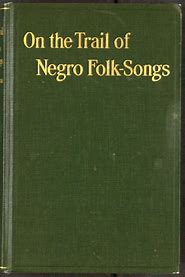
Scarborough’s account of the song came from her sister, Mrs. George Scarborough, who learned the song ´from the Negroes on a plantation in Texas, and other parts from a man in Louisiana´. The man in Louisiana knew the song from his earliest childhood and heard slaves singing it on plantations. Both the dance and the song had many variants.
A number of possible meanings of the term ´cotton-eyed´ have been proposed. The phrase may refer to: being drunk on moonshine, or having been blinded by drinking wood alcohol, turning the eyes milky white; a black person with very light blue eyes; someone whose eyes were milky white from bacterial infections of trachoma or syphilis, cataracts or glaucoma; or the contrast of dark skin tone around white eyeballs in black people.
American publishing house Harper and Brothers published the first printed version of the song in 1882. It was heard by author Louise Clarke Pyrnelle (born 1850) on the Alabama plantation of her father when she was a child. That 1882 version was republished in 1910.
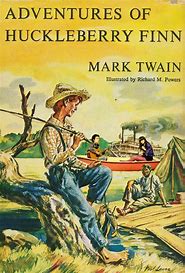
By 1884, the same year Mark Twain‘s Adventures of Huckleberry Finn was published, the fiddle-based song was referred to as ´an old, familiar air´.
Over the years, many different versions of the song have been performed and/or recorded with many different versions of the lyrics (and many without lyrics). Cotton-Eyed Joe, on occasion referred to as The South Texas National Anthem, was played for minstrel-type jigs, and it has long been popular as a square dance hoedown and a couple dance polka.
A resident of Central Texas who learned the dance in Williamson County in the early 1880s described it as nothing but a heel and toe ´poker´ with fringes added. These fringes added to the heel and toe polka were clog steps which required skill and extraversion on the part of the dancer.
During the first half of the 20th century, the song was a widely known folk song all over English-speaking North America. One discography lists 134 recorded versions released since 1950. In more recent decades, the song has waned in popularity in most regions except some parts of the American South, where it is still a popular folk song
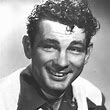
Bob Wills and Adolph Hofner (left) and his San Antonians both recorded the song, and according to music historian Bill C. Malone, Hofner was an American Western swing bandleader and singer and his 1941 version was the one that did the most to popularize the song. A 1967 instrumental version of the song by Al Dean inspired a new round dance polka for couples.
The dance remained popular in Texas in the 1970s. A circle dance called “Cotton-Eyed Joe” can be found in the 1975 edition of Encyclopaedia of Social Dance. The men stand on the inside of a circle facing out, and the women stand on the outside facing in; both circles follow a sequence of kick steps and struts.
The spoke-line version gained popularity not only in Texas, but also across the US and overseas in the 1980s. A Western craze followed the 1980 release of the film Urban Cowboy. In Merle Haggard‘s Texas Fiddle Song, the final verse makes reference to the Cotton-Eyed Joe and features the melody of both the Bob Wills and Al Dean versions Cotton-Eyed Joe and its continued popularity in Texas was referred to in the lyrics to Alabama‘s 1984 song If You’re Gonna Play in Texas´.
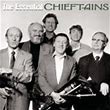
phto 6 cheftans In 1985, The Moody Brothers‘ version of the song received a Grammy Award nomination for Best Country Instrumental Performance. Irish group The Chieftains received a Grammy nomination for Best Country Vocal Collaboration for their version of the song with lead vocals by Ricky Skaggs on their 1992 album Another Country. In 1994 a version of the song recorded by the Swedish band Rednex as Cotton Eye Joe became popular worldwide.
Rednex is the team of Swedish producers who turned the American folk song Cotton Eye Joe into a jock jam. The song inspired their name and look, modelled on American hillbilly culture.
When these producers needed a ´group´ to perform their songs, they rounded up five Swedes, dressed them like country bumpkins, and had them act the part. Their official bio explained that they were found in a remote Idaho village and brought to Sweden, where they experienced civilization for the first time.
In America, and quite a bit of the rest of the world, was ambushed by Cotton Eye Joe. It got very little airplay, but infiltrated just about every sporting event, sound-tracking between-innings dance-offs in baseball stadiums, hoedowns at hockey games, and ´show us your moves´ jumbotron interstitials in basketball arenas. Suddenly, it was everywhere. But where did it come from, this Cotton Eye Joe?
As detailed above, the song has been around for well over 100 years and has taken on many forms, mostly in the bluegrass and country milieus. It’s great for line dancing, as seen in Urban Cowboy, the John Travolta movie that revived the tune in 1980.
So a stellar list of artists have recorded the song in one form or another and yet none of these mentioned above include my own Favourite interpretations.
Released in the same year as Urban Cowboy was the film Honeysuckle Rose, with Willie Nelson and that, too, featured an excellent version of Cotton Eye Joe. I´m a big fan, too, of Asleep At The Wheel and they covered the song with their customary energy the following year on their eponymous album.

Vanessa Mae, the British classical-crossover violinist with album sales in the tens of millions, also recorded a real hoe down version a few years later.

Josh Rouse (right) is an American folk-roots pop singer writer. Born in Nebraska he began his recording career in Nashville in 1998 and later relocated to Spain. In 2010 he released from there a wonderful and well-received album called El Turista, which included a version of Cotton Eye Joe which rates highly in my list of favourites. There is also a You Tube version by Josh of him singing it slowly and languidly against his own echoey piano playing. It´s a dreamy, spiritual performance.
Sadly I find myself often mis-filing my memories, these days. As I started researching and writing this piece I was certain I would find reference to a Beach Boys interpretation of the song, but the wiki and the google stalled in their search and mention of such a recording does not come up on either. If it weren´t for the fact that my record collection, laid track by track over forty five years, now makes music in Davy Jones´ locker after being washed out to sea in the UK floods of 2015, I would be able to check my memory, but I can´t. So, if any reader would like to confirm or deny whether I am simply going gaga, please feel free to comment.
Eventually the 1992 collaborative version by The Chieftains and Ricky Scaggs attracted the attention of a team of Swedish producers who transmogrified it into a wild techno number.
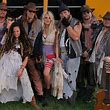
photo 9 As Songfacts tell it, said producers went ´full Hee Haw, branding the group Rednex (left) (as in rednecks, a term for rural southerners in America) and rounding up five performers to portray them as if they came fresh off the tractor. They refused interviews, but released a bio saying they were from the remote village of Brunkeflo, Idaho, and had never had contact with the outside world. They were inbred, but musically gifted, passing that gene on through generations. According to the bio, they were brought to Sweden, where they had a hard time adjusting to civilization – one member ate a dog because he couldn’t find a skunk´.
This was 1994, (a less sophisticated time than today) just a few years before the internet made such a ruse impossible (a time when Jack and Meg White of the White Stripes could mess with the press by saying they were brother and sister, not husband and wife). Cotton Eye Joe became a huge hit throughout Europe, and while the producers (including an up-and-comer named Max Martin) recorded a full album, the ´group´ was sent to perform the song, always in character, responding to questions with grunts and gestures. By the time a Swedish newspaper revealed their true identities in 1995, they already had their second hit, Old Pop In An Oak.
Cotton Eye Joe was a tougher sell in America, where it was too haywire for most radio stations and the band backstory wasn’t circulated. But baseball games were getting longer and attention spans shorter, and there was no better between-innings party starter. In the summer of 1995, it became the jock jam du jour, instant fun with the kind of kinetics that get the crowd fired up. The song never got higher than #25 on the Hot 100, but it remains entrenched on those sporting playlists, even post-Covid (we did field research and can confirm that it still soundtracks the Hartford Yard Goats’ between-innings dance competition).
Following their debut, Rednex didn’t release a new album until 2000; the lead single of which was The Way I Mate, about the mating habits of the Brunkeflo villagers. A year later, the entire band was fired and replaced at the same time as their surprisingly sincere song The Spirit Of The Hawk was holding down the #1 spot in Germany.
Rednex is predicated on stunts and misdirection. They’re not easy to contact, but the excellent reporting team at Songfacts recently tracked down one of their main producers, who told them how they made Cotton Eye Joe and how they came up with their Hee Haw aesthetic.
These days, Rednex is an international troupe with different sets of performers in different places, kind of like the Blue Man Group except with names like Abby Hick and Boneduster Crock. They’ve done concerts in two different places at the same time.
They’ve shifted producers as well, but one who was there from the start and seems to be the leader of this crazy collective, Pat Reiniz (who also goes by Ranis, Mup, or Patrick Edenberg), was graciously willing to break character and answer some of Songfacts´ questions, including why they went with the country bumpkin theme.

The interview was conducted by Carl Wiser of Songfacts. Wiser (right) is a former DJ from Hartford’s WHCN. He is the creator of Songfacts.com, a database of 16,000 songs and popular resource for radio shows nationwide, who has written up in The Chicago Tribune, USA Weekend and Men’s Journal. Songfacts is a website devoted to song information, including the history and meanings of the songs.
Mr. Wiser first wanted to know why, after hearing the Chieftains version ofCotton Eye Joe, an old American folk song, the Swedish production team decided to re-work it in their own way record it again.

The Rednex respondent was Pat Reiniz, also known as Ranis among a number of other names aforementioned, and shown here with his colleague, Bones ´It was a quick, very spontaneous and playful decision. The first demo was made in four hours as a screw-around. Much was helped by the fact that the vocals and violins were without background music, so more easy to sample in those days´.
Are the verse lyrics on your version (He came to town like a midwinter storm…) original? Those don’t appear in the Chieftains version.
´The verse lyrics are original and written by me´.
Where did you come across the term “redneck”? That’s a very American saying.
´I was an exchange student in the US in the ’80s. I probably came across the term then. We are aware that the term is derogatory towards poor, uneducated and simple folk, but we see no reason to be derogatory towards that category of people. We disapprove of that kind of snobbery within human relationships.´
Noted: How did you learn about American hillbilly culture?
´When we released Cotton Eye Joe, we knew very little about the American hillbilly/redneck culture, other than the stereotypes. For us, the redneck image was very compatible with the feeling of the music – raw, energetic, simple, party, etc. It is only afterwards that we have learned more about this culture, however. Learning about it has not really affected the Rednex image, which will remain as a 50/50 tribute/parody of that lifestyle.
That said, we think with love on the American redneck culture even though we don’t feel as educated about it as we want to be. However, it is not a necessity to perform Rednex´.
Please tell us about Old Pop In An Oak, including what the title means.
When writing it, I was determined to use the same phonetics as in Cotton Eye Joe (which I came to regret later) as an exercise to better understand what made the song sound ´folky´. So first the words were chosen (out of a long list of options with the same phonetics), then afterwards a ´meaning´ was attached to them and later a whole lyric was written.
The story is that Old Pop is being chased up the oak by an angry grandma for doing some mischief by the BBQ´.
Rednex didn’t play America until 2017. Did you have any idea what kind of impact Cotton Eye Joe had over here? It’s still played at many of our sporting events.
´We had some notions about it because of social media and people telling us, but it was not until after our visit that we understood better what impact it has on so many levels (sport events, weddings, school phys ed, line dance, etc). To learn about this has been awesome and somewhat shocking and makes us so proud´.
Did the singers in Rednex speak English fluently?
´Yes, the original band was Swedish and people in Sweden speak good English´.
What is the ´Rednex philosophy´?
´Keywords: freedom, acceptance, party, energy, unpretentiousness. allowance, individual expression´.
What was Max Martin’s role in Rednex?
´Denniz Pop and Max Martin produced Wish You Were Here, which was the third single from the first album. It was a huge hit in Northern Europe, was #1 in six countries, including Germany, and sold more than one million (a lot in those days).
It was Max Martin’s first Gold disc and #1 hit. He did the musical parts of the production, the strings, etc. Denniz did the beats. This was in the later stages of the album production so he was not involved in any other songs´.
What’s the Rednex song you’re most proud of?
´It probably varies from day to day, but I love the video of Manly Man, which was (finally) a video that we could make ourselves without the censoring influences of record labels. Together with the song, it portrays much of the true soul of Rednex. Though I understand that it is a mouthful for the average viewer and won’t be nearly as popular as ´Cotton´.




Leave a Reply
Want to join the discussion?Feel free to contribute!